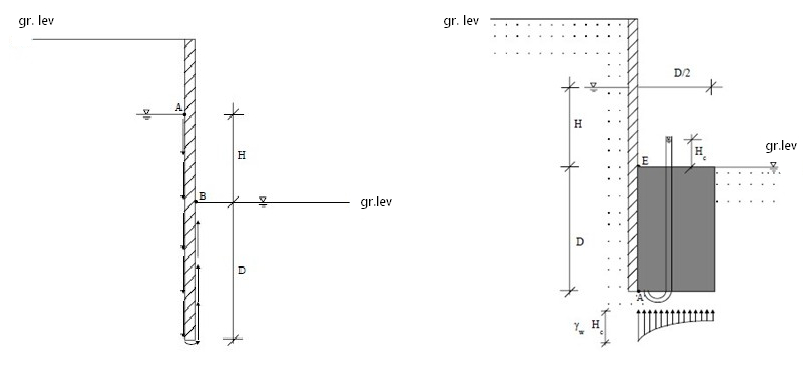In the case of a diaphragm driven into the ground, the presence of the water in positions such as to trigger a filtration motion involves the establishment of a filtration force which, if directed upwards, may cancel the weight of the soil which, in the absence of cohesion, it can be dragged by the water flow and affect the stability of the work. The phenomenon of dredge stability, similar to that of siphoning, has been faced for the first time by Terzaghi (1943). Unlike the siphoning, which is a localized phenomenon in the outlet point of the first flow line, the dredge uplift extends to a depth equal to bulkhead embedment depth for a width equal to half of that embedment.

To simplify the problem of determining the actual results from porewater pressure at point A, it is assumed that the value of the overpressure to the foot of the diaphragm is constant over the length D/2 and equal to γw x Hc. Hc is used to determine the expression of the efflux gradient iE:
![]()
From which is obtained:
![]()
The filtration force Sw which tends to lift the block of soil involved is equal to:
![]()
The limit conditions of stability are reached when Sw equals the effective weight of the block, therefore, the dredge uplift safety factor is defined as the ratio between the effective weight of the block and the filtration force:

© GeoStru